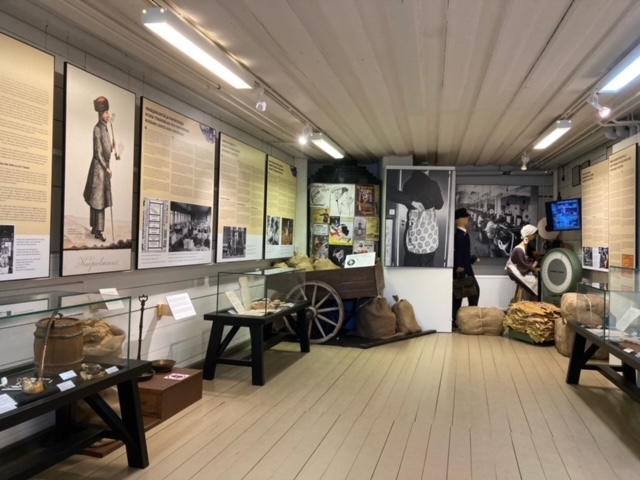About the Customs Museum
The Customs Museum was founded in 1930. At that time, the supervision of sea borders was transferred from Customs to the Sea Guard. All around Finland, customs offices were in possession of a lot of old objects, some of which dated back to the previous centuries.
At first, the Customs Museum operated in the facilities of the National Board of Customs in the corner of Erottaja and Uudenmaankatu street in the centre of Helsinki. During the war, bombs hit the building that housed the Museum and some objects were destroyed. In the 1960s, Customs leased facilities for the Museum at the address Unioninkatu 5.
In the early 1990s, the Customs Museum was able to secure facilities of its own in the Hamilton-Polhem curtain, inside the historical Suomenlinna Sea Fortress, at Suomenlinna B 20 D. After that time, the museum exhibition was open during summers.
Nowadays, the Museum operates under the Communications Unit of the Administration Department of Finnish Customs, and implements the Customs communications strategy.

Collections and exhibitions
The current collection at the Museum consists of various tools relating to customs clearance and procedures which were used in measuring and analysing goods. Another important category of objects comprises uniforms and other insignia. The fourth main category of objects consists of various items relating to customs inspections. These objects also include smuggled goods.
The collection also contains photographs that shed light on the history of Customs. Some photographs date back to the 1930s. In the early 2000s, the Museum started to digitise photographs. Currently, there are about 3 000 digitised photographs. The Customs Museum also has considerable collections of documents and printed material.
Since 1992, the Museum has arranged exhibitions with varying themes in addition to the basic exhibition. In 2010, the Museum started organising exhibitions with a two-year cycle. The Museum has engaged in extensive cooperation with other museums in preparing exhibitions.
The number of museum visitors has risen steadily in the 2000s. In the 2016 season, altogether 4 500 people visited the exhibition. About half of the visitors are foreign citizens.
The Customs Museum also provides information services relating to its collections. The Museum can be contacted by phone or e-mail.
Since 2014, the Museum has communicated with the public through social media. Several articles and more extensive works that focus on the history of Finnish Customs have also been published.
Previous exhibitions
The Customs Museum has organised the following thematic exhibitions during the last decade:
2006 Nordic Klondyke – Foreign trade and customs activity in Petsamo
2007 From booze to figs – 100 years of the Customs Laboratory
2008 Women at Customs
2009 Customs crosses borders – The history of the international activity of Finnish Customs
2010–11 Customs in Karelia – Customs at the Gates of St. Petersburg 1812–1939
2012–13 Finnish Customs 200 years Customs jubilee year exhibition
2014–15 Heavenly goods – Customs and the history of air traffic
2016–17 The most hated tax? Customs and the import of cars
2018 1918- A War Within Customs
2019–20 Dogs at Finnish Customs – 50 Years of Detector Dog Activities
2021–22 Leaves of Desire. The History of Tobacco and Finnish Customs
Cooperation in the museum field
The Customs Museum takes part in domestic and international cooperation between museums. The Museum also cooperates with museums maintained by other authorities, and with other specialised museums. The Customs Museum is a member of the Finnish Museums Association.
Since 1993, the Museum has been a member of the International Association of Customs/Taxation Museums (IACM). The Association maintains a rich heritage of customs activity in a rapidly changing world.